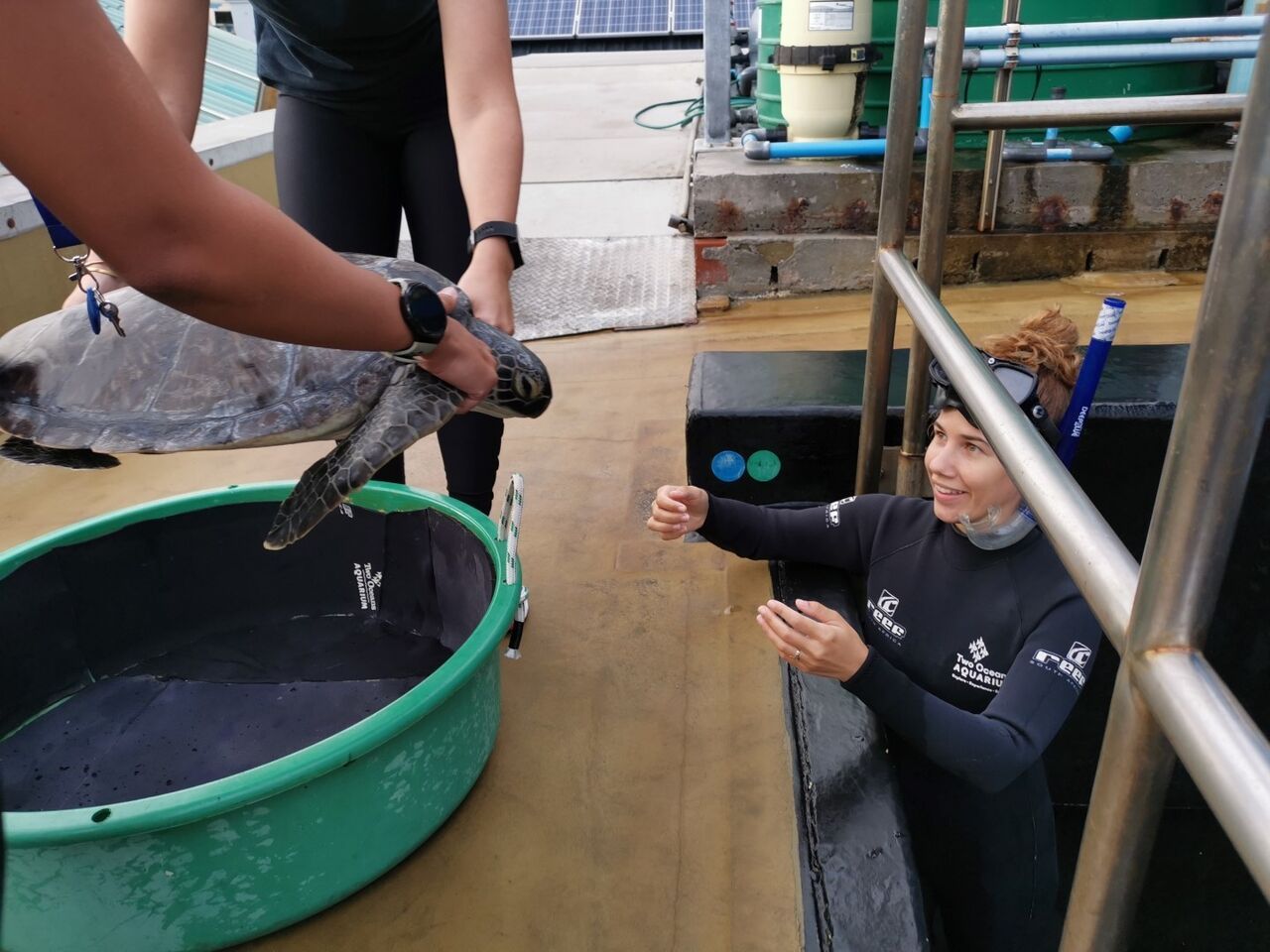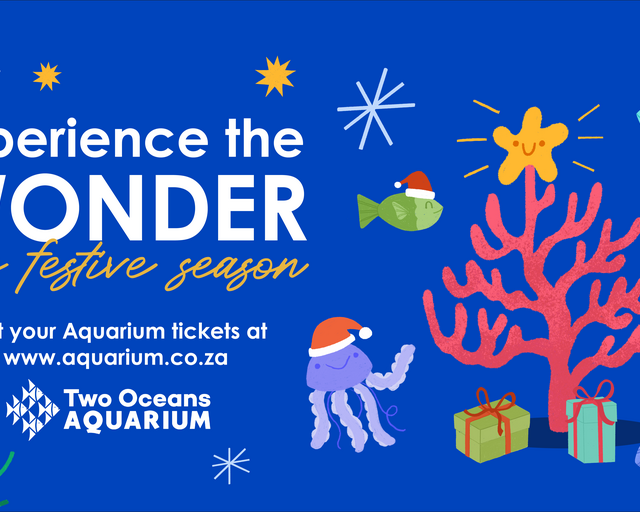We've just welcomed a newcomer to theI&J Ocean Exhibit - Harry the green turtle! While his public debut might be new and exciting, Harry actually arrived at the Two Oceans Aquarium in October last year, and has been undergoing intense rehabilitation with the animal health team of the Two Oceans Aquarium Foundation. Harry is now out of the woods, but he still needs plenty of time to rest and regain his strength before being released, and the I&J Ocean Exhibit is providing a big, safe space for him to do this!
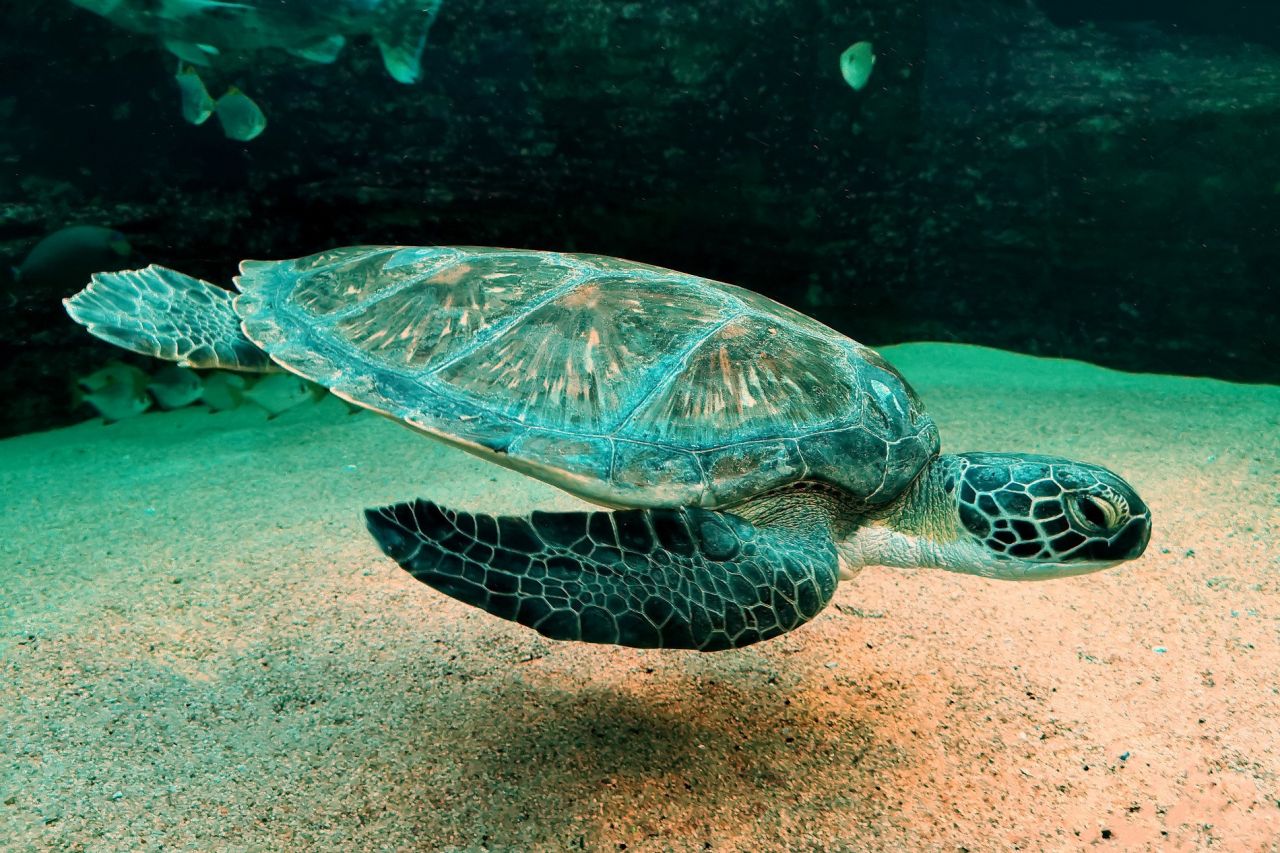
Harry is a green sea turtle (Chelonia mydas), an endangered species of turtles that pass South Africa as part of their long-distance migrations. All the major hazards that affect these turtles are man-made - climate change, abandoned fishing nets, plastic pollution - so when we have the opportunity to rescue one that is distressed, we need to do what we can help this species. Fortunately, members of the public make these rescues and the subsequent rehabilitation work possible with their support.
Did you know: Harry the green turtle isn't the only "Harry" in the Aquarium, we also have Harry the mole snake!
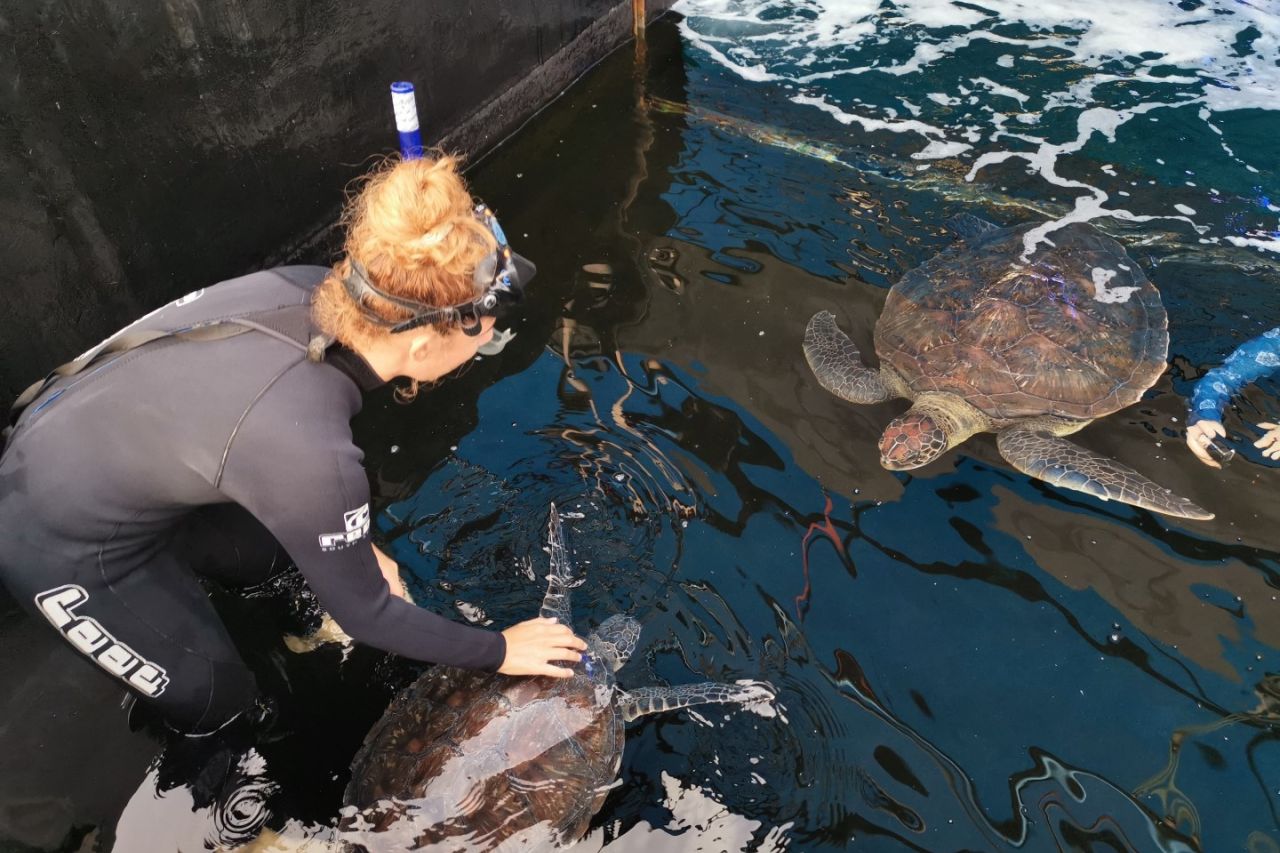
Harry's rescue and rehabilitation
Harry was found washed up on a beach at Stillbaai on 21 October 2020 by members of the public. He was incredibly weak and had clear lesions on his carapace. These turned out not to be physical injuries, but rather necrosis of his skin due to an infection called "shell rot", something that turtles can be susceptible to if their metabolisms and immune systems are suppressed, which was clearly the case, as Harry was also severely underweight for his size.
Upon arrival at the turtle rehabilitation facility at the Two Oceans Aquarium, the rehab team needed to remove some of Harry's shell plates, known as scutes, in order to remove infected tissues and clean his wounds. Harry initially showed great improvement, eating prawns from his carers and making regular use of the scratching post in his enclosure (something his carers loved to watch).
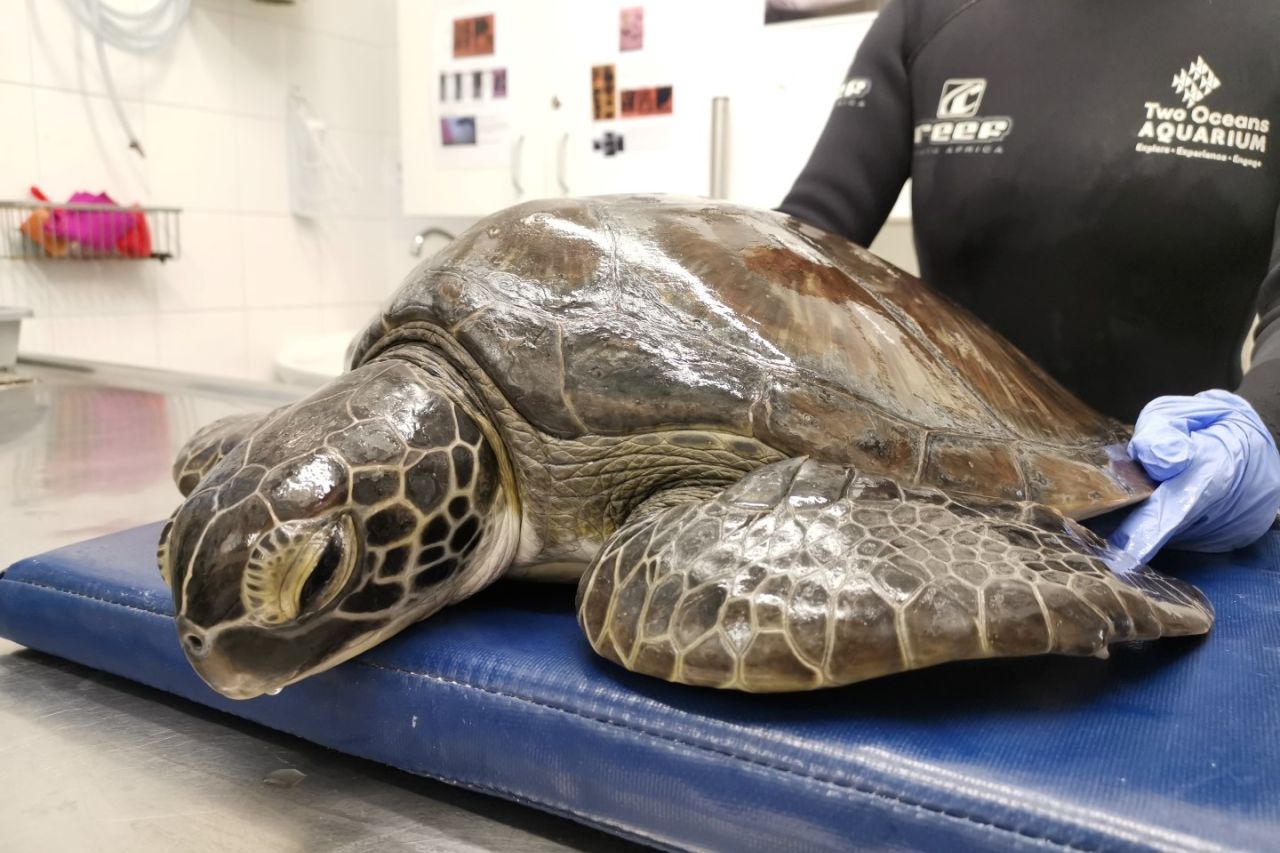
Harry's seemingly quick recovery is what led to him being affectionately dubbed "Harry the Magic Turtle."
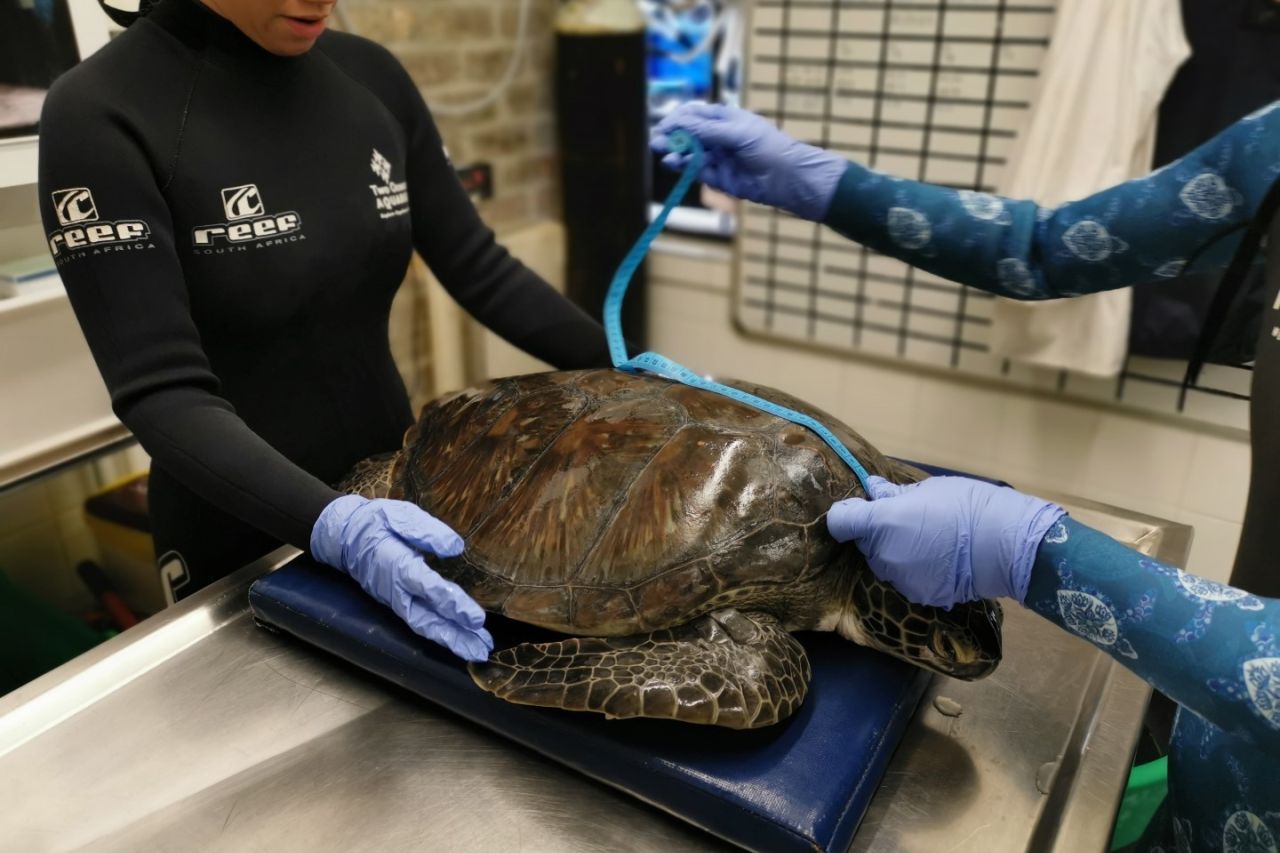
Unfortunately, after a few weeks, his appetite vanished and he became very lethargic - both signs of digestive system problems. "After the initial skin rot which ailed Harry, we also realized that he had severe gut stasis, something that green turtles are quite susceptible to because they have an extra-long gut for all the seagrass they eat!" said Talitha Noble.
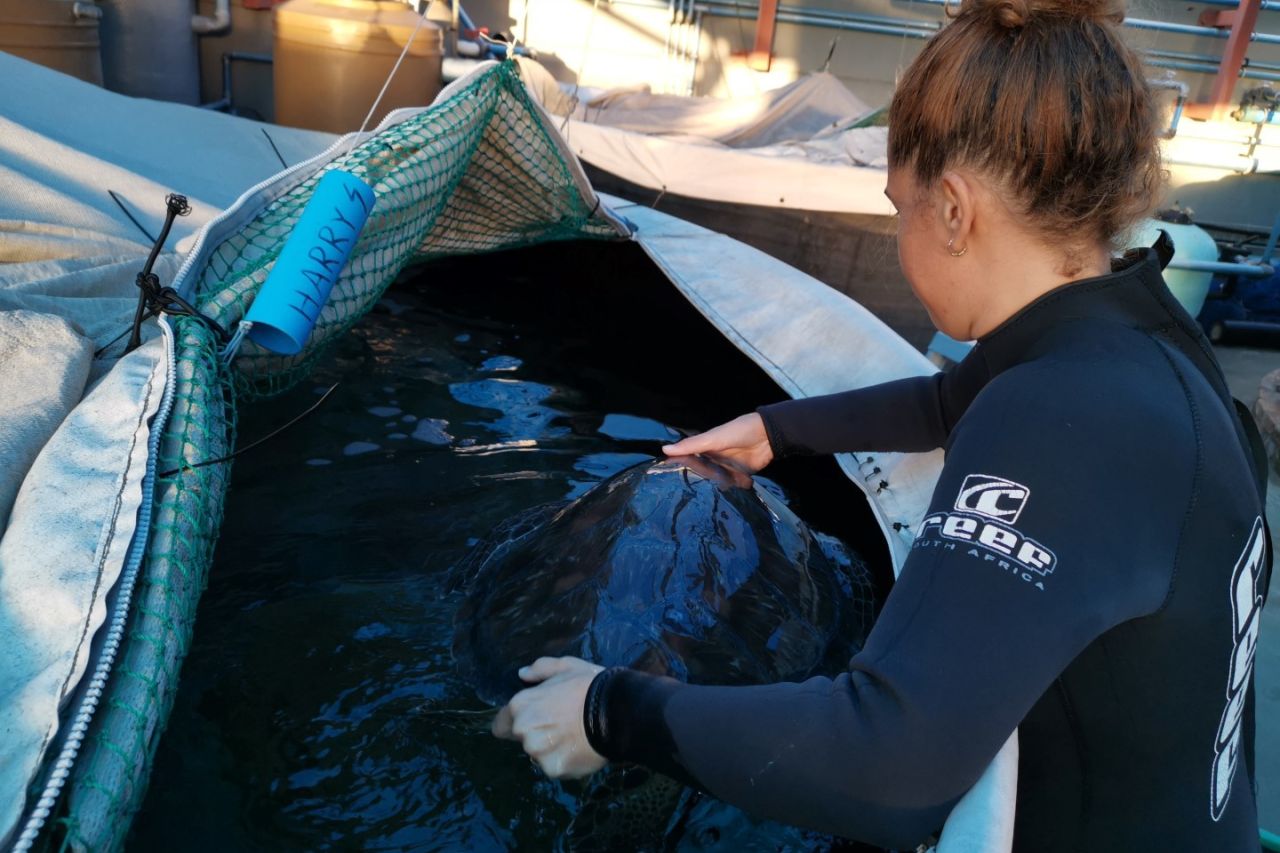
During the past three months, a barium study was conducted on Harry - a study where an isotope that shows up in X-rays was fed to him, and then X-rays taken at regular intervals to study movement in his gut. Harry was also moved to a larger enclosure with the hopes that some exercise would allow him to pass the blockage. And it did - Harry pooped out plastic pollution that he had consumed while at sea.
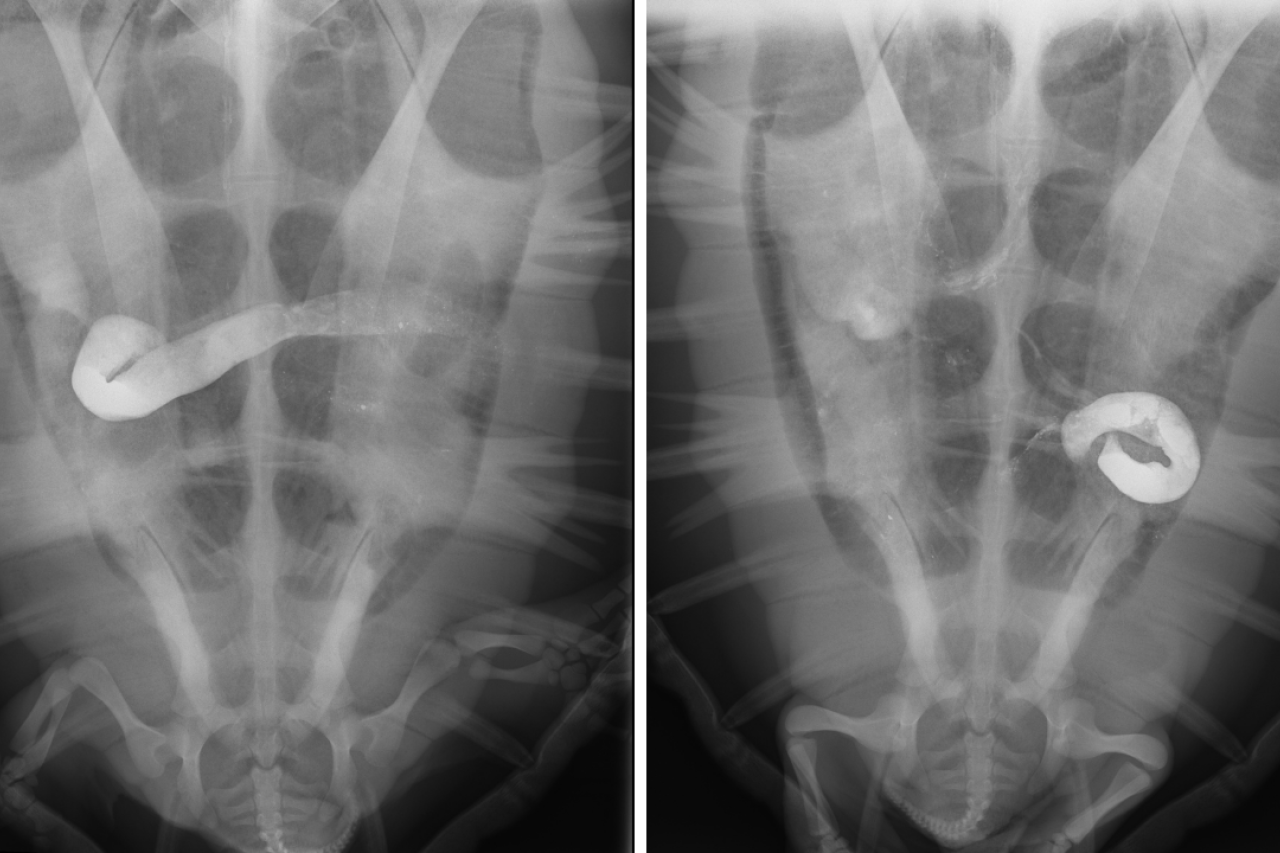
Harry's appetite has now returned, and he's happily gobbling up his favourite food - sea lettuce!
What's next for Harry?
The seven-month-long healing process took its toll on Harry, leaving him underweight and unfit. Just as we humans need some time to bounce back after recovering from a severe illness, turtles also need to regain their strength and fat reserves after a long recovery. This is especially important, as sea turtles need to be able to cover large distances between feeding grounds once back in nature.
For this reason, the turtle rehabilitation team has decided to keep Harry a bit longer, to give him a chance to rebuild his strength before release. During his time in the I&J Ocean Exhibit, his health will continue to be monitored to ensure that there are no lingering digestive problems, and Alexandra Panagiotou, on the Two Oceans Aquarium Foundation's turtle team, will monitor his fitness and behaviour. If all goes to plan, a release date will be planned for Harry once the warm currents return to the Cape.
Be sure to pay Harry and his big stepbrother Bob a visit the next time you're at the Two Oceans Aquarium!
If you'd like to support the rehabilitation of Harry, and the approximately 50 other turtles in the care of the Foundation, a small donation is the best way to help us continue the care of these precious animals.
